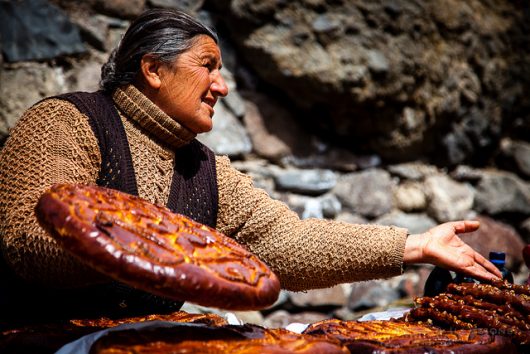5 Things to Know about Human Rights in Nagorno-Karabakh

In 1994, the governments of Armenia and Azerbaijan signed a ceasefire agreement that many politicians hoped would put a stop to years of conflict between the two states. When the Russian tsarist regime collapsed in 1917, Azerbaijan and Armenia fought over control of the landlocked mountainous Nagorno-Karabakh, a region in the Caucasus the size of Connecticut. After the Red Army annexed the Caucasian republics to the Soviet Union, the Armenian-majority territory of Nagorno-Karabakh became an autonomous region of Azerbaijan.
Seven decades later, when the Soviet Union began disintegrating in the late 1980s, Armenian secessionists and Azerbaijani troops launched a war over Nagorno-Karabakh. The outbreak of violence claimed around 20,000 lives and created one million refugees. After the 1994 ceasefire, Nagorno-Karabakh declared its independence, but the international community continues to recognize the war-torn territory as a part of Azerbaijan.
Five Facts About Human Rights in Nagorno-Karabakh
The “Four Day War” in April 2016—an outbreak between the two warring parties that killed at least 200 people—ended more than two decades of ceasefire and put the human rights records of Azerbaijan and Armenia into the spotlight. Here are five facts about human rights in Nagorno-Karabakh:
- High-ranking Azerbaijani officials have spread hate speech and incited violence against the country’s Armenian minority, according to a 2016 Ombudsman Report. In November 2012, Azeri President Ilham Aliyev took to Twitter to declare that Armenia “is actually a colony, an outpost run from abroad, a territory artificially created on ancient Azerbaijani land.” Public statements like Aliyev’s violate Article 4 (c) of the U.N. International Convention on the Elimination of all Forms of Racial Discrimination, which bars authorities from promoting racial discrimination.
- Azerbaijani forces ruthlessly murdered civilians when they invaded Nagorno-Karabakh on April 2, 2016. Soldiers shot the elderly, infirm and young, and the targeted shelling of residential buildings killed or wounded more than two dozen civilians, many of whom were minors. The Ombudsman found Azerbaijan in violation of the Geneva Convention of 1949, which delineates special protections for the sick, wounded and pregnant during war.
- While Armenia has instituted civil and political liberties since its independence in 1991, Amnesty International has called out the Armenian government for silencing journalists investigating the Nagorno-Karabakh conflict. According to the report, Armenians show little tolerance for “unarmenian” views of the conflict, with individuals disagreeing with mainstream opinion labeled as traitors. In 2017, the European Court of Human Rights delivered 12 judgments concerning Armenia, 11 of which found the country in violation of the European Convention of Human Rights.
- With the exception of The HALO Trust and the International Committee of the Red Cross, which helps reunite family members who have gone missing in combat, the international community provides little support for human rights in Nagorno-Karabakh. Many NGOs know that entering Nagorno-Karabakh would make them ‘persona non grata’ in Azerbaijan, preventing them from returning in the future.
- Despite Azerbaijan’s threats, the Lady Cox Rehabilitation Center—an organization that helps individuals with disabilities—has made substantial progress for human rights in Nagorno-Karabakh. Wars in the early 1990s and, more recently, in April 2016 injured many civilians, leaving some with physical disabilities; infrastructure for wheelchairs and medical facilities for treatment, however, were scarce. The Lady Cox Rehabilitation Center provides treatment for 1000 patients annually and supports therapists that travel to individuals who cannot travel to Stepanakert, the capital of Nagorno-Karabakh, to receive care. In 2017, the Center opened a department for children with autism.
Human rights in Nagorno-Karabakh will improve with increased stability. In July 2018, Armenian Prime Minister Nikol Pashinyan announced that he was ready to talk peace in Nagorno-Karabakh. A month later, Russia and Germany proactively offered to facilitate a settlement that would secure long-lasting peace. Once Armenia and Azerbaijan come to terms with the fate of the Nagorno-Karabakh conflict, it is hoped that humanitarian organizations will step in to monitor conditions on the ground and heal old wounds.
– Mark Blekherman
Photo: Flickr
